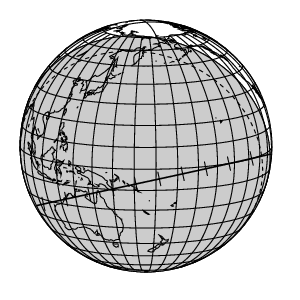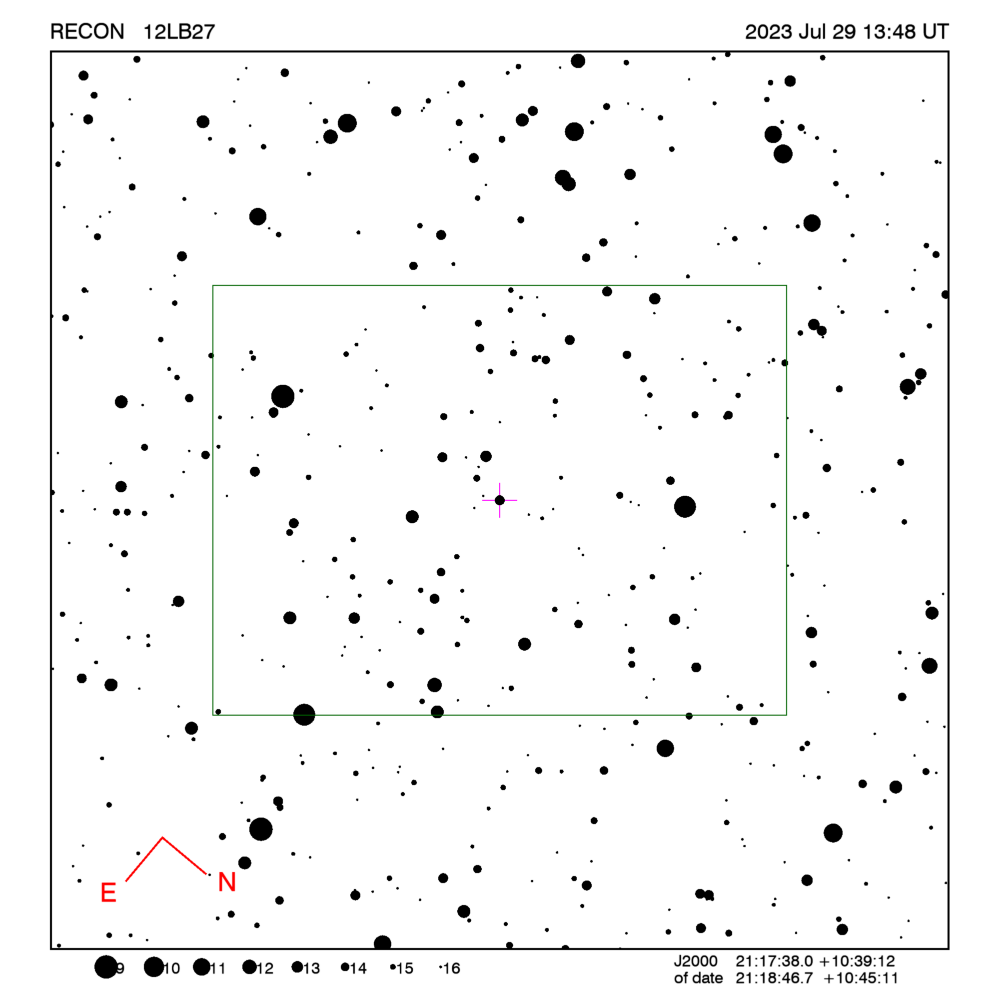RECON: TNO occultation with 12LB27
Event between 12LB27 and star GA1000:19059037
with event index number of 2429242
Geocentric closest approach at 2023/07/29 13:48:13 UTC
J2000 position of star is 21:17:38.0 +10:39:12
Equinox of date position of star is 21:18:44.4 +10:45:00
Stellar brightness G=14.1,
use SENSEUP=64 with the MallinCam and and exposure
time of 1 seconds with the QHY174 camera.
Star is 68 degrees from the moon.
Moon is 86% illuminated.
TNO apparent brightness V=21.8
 TNO is 15.8 AU from the Sun
and 15.0 AU from the Earth.
TNO is 15.8 AU from the Sun
and 15.0 AU from the Earth.
The TNO is moving 19.8
km/sec on the sky relative to the star, or,
6.6 arcsec/hr.
The 1-sigma error in the time of the event is 62 seconds.
The 1-sigma cross-track error in the shadow position is
640 km.
The TNO has an absolute magnitude Hv=9.7
Diameter=69.5 km assuming a 5% albedo -- 3.5 sec chord
Diameter=28.4 km assuming a 30% albedo -- 1.4 sec chord
Dynamical classification is CENTAURR
Star training set for 12LB27, (2023/07/29 13:48UT)
Object RA Dec mag sep mel
Deneb 20:42:14.2 +45:21:56 1.3 35.49 85
Tarazed 19:47:22.8 +10:40:20 2.7 22.45 51
PPM 139919 21:20:00.5 +11:18:13 6.0 0.63 69
PPM 139880 21:18:32.9 +10:49:30 9.8 0.09 68
12LB27 21:18:46.7 +10:45:11 14.1 69
Positions are for equinox of date

Azimuth is measured in degrees eastward from north.
North is at an azimuth of 0, due East is at an azimuth
of 90 degrees, due South is 180, and due West is 270.
Do not use the listing below for the RECON CPC 1100 telescopes.
This is provided for other non-team facilities.
Star training set for 12LB27, (2023/07/29 13:48UT)
Object RA Dec mag sep mel
Deneb 20:41:25.9 +45:16:49 1.3 35.49 85
Tarazed 19:46:15.6 +10:36:48 2.7 22.45 51
PPM 139919 21:18:52.1 +11:12:12 6.0 0.63 69
PPM 139880 21:17:24.3 +10:43:31 9.8 0.09 68
12LB27 21:17:38.0 +10:39:12 14.1 68
Positions are for J2000
Event circumstances last updated at 2022/10/24 03:56:16 UT
Marc W. Buie,
Southwest Research Institute
RECON
 TNO is 15.8 AU from the Sun
and 15.0 AU from the Earth.
TNO is 15.8 AU from the Sun
and 15.0 AU from the Earth.
